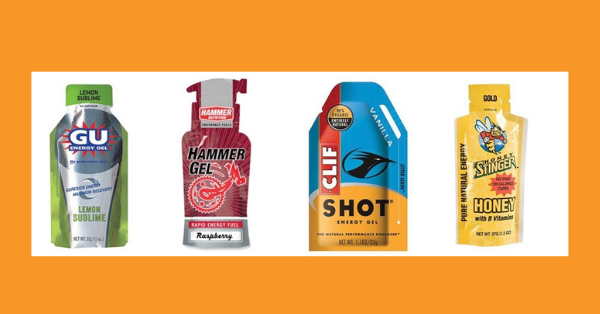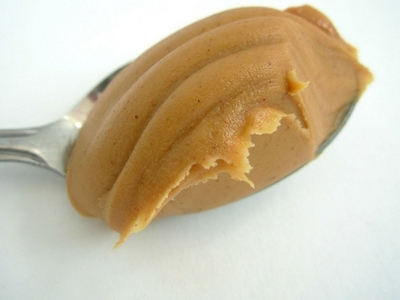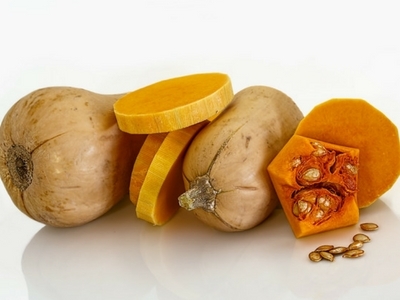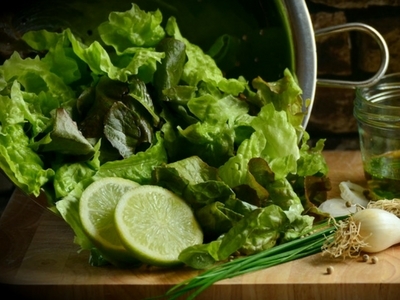
HALF MARATHON RACE NUTRITION TIPS
Yay you’ve done it! Signed up for your first Can Too run! Well done! You’ve got your training plan and some cute new gear but what about all those gels that “runners” talk about? Do you really need them? Developing a strategic nutrition plan is essential for running your best race. While sub-optimal fuelling might prove adequate for shorter, slower training runs, it can often be the factor which turns a great race into a disaster from the 10km point of the race.
The biggest mistake people make is failing to practice their exact pre-race and in-race fuelling strategy before their event. Like any performance, you should have a complete dress rehearsal before the event. For runners this means trialling clothing, accessories, and fuelling strategies on your training runs.
- BEFORE YOUR RUN
It is important to start the race with adequate fluid levels. Hopefully this has been a focus in the few days before the race, making sure that you are not starting the race dehydrated. A good sign is pale, straw coloured pee.
Don’t go overboard consuming fluids, too much can be as dangerous as not enough.
On race day and also on your long run training days the food you eat and drink before exercising will help you to:
- Fuel and hydrate your body for the session
- Allowing you to train harder for longer
- Avoid getting hungry during the session
Ideally you should aim to have a meal 3-4 hours before your workout or a small snack 1-2 hours beforehand. Everyone is different with what they like to eat and what agrees with their stomach but in general, your pre-exercise meal or snack should be:
- Rich in carbohydrates to top-up your fuel stores
- Low in fibre, especially if you have a sensitive tummy
- Easy to digest– avoid foods overly high in fat as these are slow to digest
Some of my favourite options are:
- a small bowl of wholegrain cereal or oats with yoghurt and fruit
- sourdough toast with sliced banana and nut butter
- Raisin toast with honey
- Fruit smoothie
- DURING YOUR RUN
Your body has enough glycogen stored to fuel you for exercise sessions of up to 75 minutes or so without sports drinks or gels so for shorter sessions you can just concentrate on hydration. Water is usually sufficient, however if you end up with a post exercise headache you could try nuun tablets to replace lost electrolyes.
For runs or races over 75 minutes runners should aim to consume at least 30g, and as much as 90g, of carbohydrate per hour, and fuelling should commence within the first hour of the race (usually at around the 7km mark) whether the runner feels like it is required or not. Carbohydrate intake can be maximised through:
1 Using multiple carbohydrate sources including fluids, gels, bars, chews and even non-sports specific foods.
2 “Training your gut” to accept more carbohydrate by practicing fuelling on all training runs longer than 14km.
3 Scheduling your carbohydrate intake so that it is adequate and not forgotten.
Fuelling options
Gels, chews and hydration / sports drinks are the main sports specific fuelling options available to use during your run, and each has their advantages and disadvantages. There is no best option, or best gel, to use, and the best product for you to use is largely dependent on what you like, and what you can stomach.
GELS

Popular gel brands include Endura, Gu, Hammer, Clif and SIS but there many other brands out there too. Gels vary in texture and taste, with some being thicker than others. Gels are a good fuelling option as they contain a lot of carbohydrate in a small volume of food and don't require chewing, however, some people struggle with their texture and they may cause stomach upset. Trial and error is the only way to determine which gel is going to work for you.
CHEWS

Chews are what their name implies, small lolly sized chew with a gum or jelly baby type texture. The advantages of chews is that they provide a more palatable source of fuel. However, some people don't like to chew while running, and you would have to eat at least a half a pack of chews to ingest the same amount of carbohydrate found in a gel. Make sure you carefully read the nutrition panel to check you are taking the correct amount of chews. These can be a great option for long slow runs or hikes where you intend on walking some of your distance.
Sports Drinks
Liquid fuelling options range from the stock standard sports drinks such as Gatorade, to more running specific products such as Endura, Tailwind, Pure, or Torq. Sports drinks are important to include as part of your fuelling strategy as they serve a double purpose or hydrating and fuelling at the same time. As with other fuelling products, it is a matter of trial and error to find the brand and flavour that will work for you. You need to ensure you are consuming enough of them to cover your 30g carbohydrate per hour.
Other options
Some people prefer to fuel on energy bars that are almost like a muesli bar (such a Winners or Clif brand) while others prefer to use more natural food options such as dates, or baby food pouches. These may have the advantage of being gentler on the stomach, but they often do not contain the same level of carbohydrate as sports specific products.
Practicing your race fuelling
- Trialling all your fuelling products during your training is essential. Both sports specific fuelling products and every day foods may cause digestive discomfort, nausea or the need to run to the bathroom. You want to discover which products disagree with you on your training runs, not during your race.
- If possible, find out what products are available at the aid stations during your race, and use those in your training to see if they agree with you. If you are planning to get your nutrition from the drinks at the aid stations bear in mind how much you are actually going to drink. One cup contains 80ml which will only have about 6 grams of carbs depending on the sports drink provided.
- Fluid should be consumed at a rate as close as possible to your sweat rate but not over. If this amount is not possible consume as much as is tolerable to your digestive system while running. Most runners will be fine with between 600-800ml per hour. Make adjustments if race day is unusually cold or hot. Start consuming your fluids early and on a regular basis to limit dehydration and to prevent gastric distress. Over consuming fluids (weight gain during an event) can lead to hyponatraemia (low blood sodium) which is a dangerous medical condition.
- Sports gels should be taken with water not with a sports drink - otherwise the concentrated sugar mix may cause GI issues.
- Consider if you want to consume caffeine during your race, and trial it to make sure the source from which you obtain it (gel, chews, fluids, or a caffeinated strip like revvies) agrees with you. Caffeine is a proven performance enhancing supplement due to its’ benefit on perceived time to exertion and physiological effects. However, for some people caffeine can cause an increased heart rate, anxiety, sleep disturbances and gastrointestinal upset.
- About 4-6 weeks out from your target event have a trial nutrition run. Eat your pre- long run dinner, your pre-long run breakfast and take your gels/chomps just as you plan to in your target event. It's also a good time to trial your outfit and shoes. Now is the time to come up with a plan that works for you.
- AFTER YOUR RUN
The goals of the recovery nutrition are to:
- Refuel and rehydrate the body
- Promote muscle repair and growth
- Boost adaptation from the training session
- Support the immune function
Rehydrating should begin soon after finishing your run. The body is most effective at replacing carbohydrate and promoting muscle repair and growth in the first hour after exercise, however repair will continue over the next 12-24 hours. You could use your next regular meal after your run as your recovery nutrition or have a small snack soon after exercise to kick-start the recovery process followed by your next main meal to complete your recovery.
Post workout foods should be:
- Rich in quality carbohydrate to replenish muscle fuel stores
- Contain some lean protein to promote muscle repair
- Include a source of fluid and electrolytes to rehydrate effectively
There’s no “best” option for what to eat after exercise. Dairy foods such as flavoured milk, smoothies or fruit yoghurt can be a great option as they can provide carbohydrate, protein, fluid and electrolytes ticking all of your recovery goals in one handy option. Some other options that you may like to choose include:
- Lean chicken and salad roll
- Bowl of muesli with yoghurt and berries, my recipe is here
- An egg with wholegrain toast
- Fruit smoothie- make this up the night before and have it on your way to work.

- CARB LOADING
The body only has a limited supply of carbohydrate in the muscles and liver. Since carbohydrate is main source of fuel for the body during high intensity exercise, muscle fuel stores should be topped over in the 24-36 hours before competition to enhance performance.
In the few days before your race carbohydrate loading will make a big impact. Carb loading isn’t about a big bowl of pasta the night before your event – instead it focuses on replacing protein, fibre and fat with carbohydrate sources. You should be targeting between 8-12 grams of carbohydrate per kilo of body weight over the carb load period. So a 60 kg runner would need to consume between 480 and 720 grams of carbs over the day. As a guide 2 slices of white toast contain about 50 grams of carbs. If it’s your first time carb loading I’d suggest sticking to the lower end of the range.
The carbs you choose should be low in fibre to reduce the chances of getting an upset stomach during the race. This is the time to choose white bread, rice or pasta over wholemeal. You can go back to your quinoa after the event. You can also enjoy some of the foods you might not normally eat such as a crumpet with honey.
Here’s some detailed guidance including a meal plan covering carbohydrate loading:
http://racheleagleton.com.au/blog/carbohydrate-loading-for-endurance-events
Find out more about me:
Sources: Sports Dietitians Australia, Australian Institute of Sport
- Content in this blog should be considered general advice only and may not suit your circumstances.
- The advice provided herein is not meant to replace the advice provided by your Doctor. You should always seek your Doctors approval before starting a diet, exercise or weight loss program.
- The program may not be appropriate for some people with certain conditions. If you are less than 18 years of age, are pregnant or breastfeeding, taking medications, have heart disease, a kidney or liver disorder, high cholesterol, high blood pressure, gout, type 1 diabetes, type 2 diabetes or have any medical conditions that require specific dietary modifications, you should seek medical approval.








